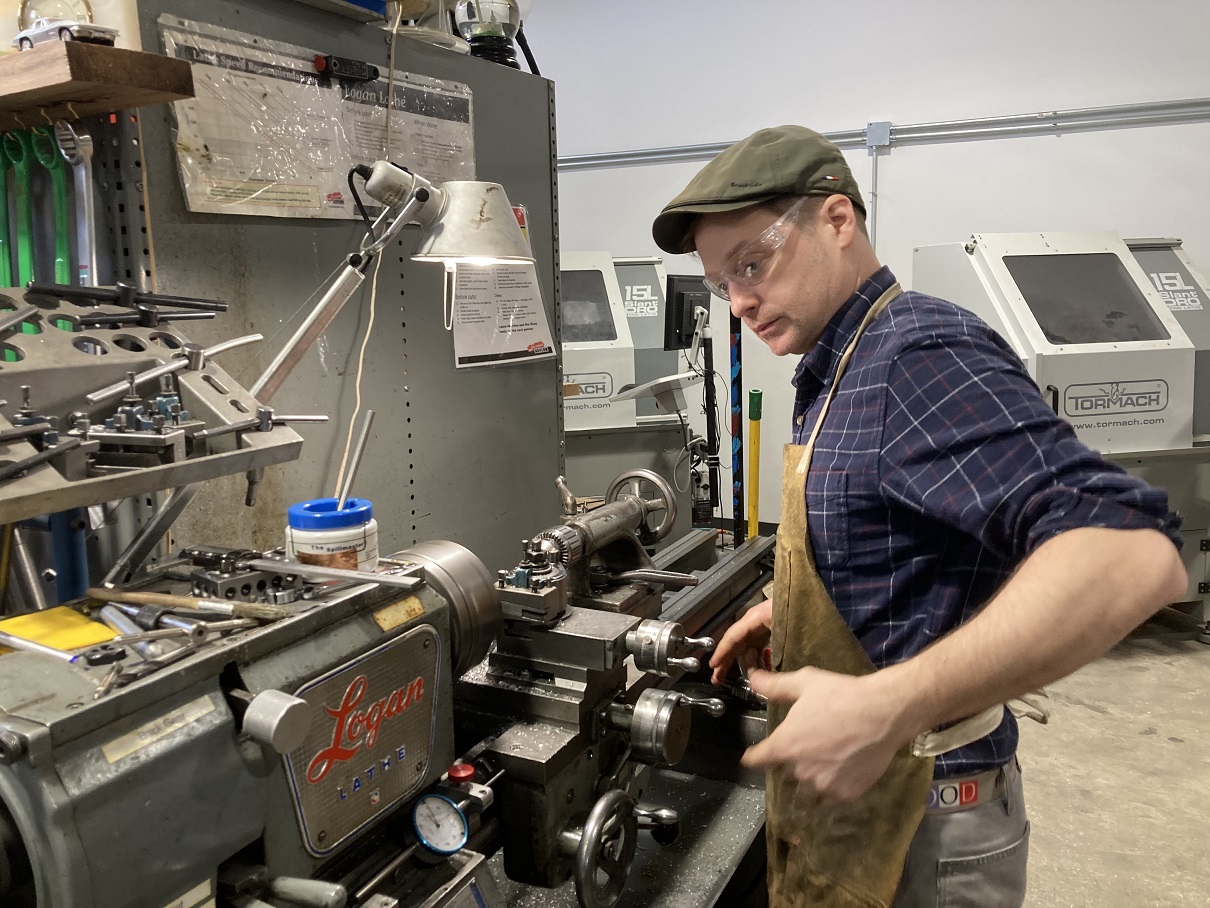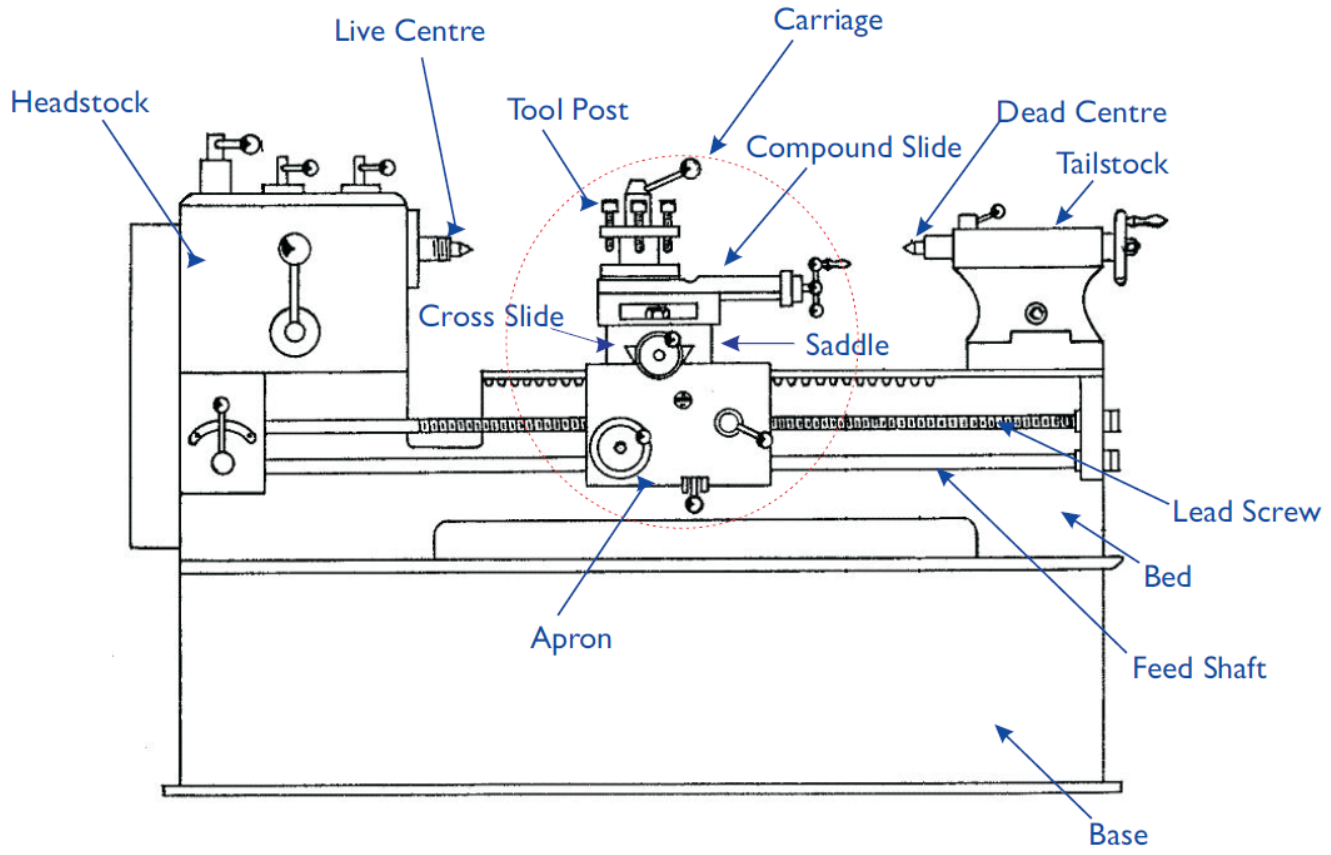Category:Lathes -- Metal: Difference between revisions
(→Safety) |
No edit summary |
||
| Line 1: | Line 1: | ||
[[Category:Tools]][[Category:Lathes]] | [[Category:Tools]][[Category:Lathes]] | ||
[[Category:Tools]][[Category: | [[Category:Tools]] | ||
Link to: [[:Category:Machine Shop | Machine shop main page.]] | |||
{{EyeWarning}} | {{EyeWarning}} | ||
Revision as of 18:14, 13 March 2024
Link to: Machine shop main page.
| Eye protection required! | ||
|---|---|---|
| Metal-Cutting Lathes | |
|---|---|
| General Info | |
| Make | various |
| Model | |
| Serial | |
| Specs | |
| Manual | |
| Asylum Info | |
| Location | Machine Shop |
| Rubric | |
| Training | |
| Testing | |
| Restrictions | red |
Description
A lathe is a machine tool that turns workpiece on a rotating spindle and allows the operator to cut it with a sharp tool. A metal or plastic workpiece is held in a chuck and a sharp cutting tool is manipulated on a moving tool holder by manual motion; or by a mechanized drive geared to the spindle; or by CNC.
Cutting tools are most often simple sharpened square bars of high-speed steel that are clamped to a moving tool post. Drills and various specialized cutting tools are also avaialble.
It should be apparent from the safety discussion below that this machine poses many unique and severe hazards to the user. Be sure you are properly trained and tested before using any lathe.
Link to: Online lathe textbook
| Use For | Do Not Use For |
|---|---|
|
|
Safety
Personal:
- Wear safety goggles to guard against smoking-hot flying razor-sharp metal chips. Eyeglasses are not safety goggles.
- Do not wear loose clothing or jewelry. Tie back long hair or secure under a cap. No watches. Loose items like these can be drawn into the machine and maim or kill the user.
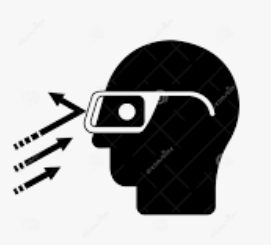
| |
|---|---|
- Always wear closed-toe shoes in the shop.
- Wear an apron to protect clothing from oil spatter and flying metal chips.
- Keep hands and fingers away from moving parts and cutting tools.
- Lathe chips can become dangerously long and get whipped around by the chuck. Consider feeding a cut intermittently to keep the chips short and well-behaved.
- Never lean on the lathe
Machine:
- Keep all safety shields and covers in place when operating the machine.
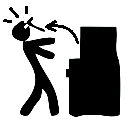
| |
|---|---|
- Remove chuck keys and wrenches before starting the lathe
- Make sure the workpiece is properly centered and securely clamped
- Always stop the spindle before making adjustments
- Use pliers or a brush to remove chips from the cutting area. Not fingers.
- Do not measure work or adjust a chuck while the workpiece is turning.
- Never lay tools directly on the lathe ways. Protect the ways with a sheet of wood when handling heavy chucks.
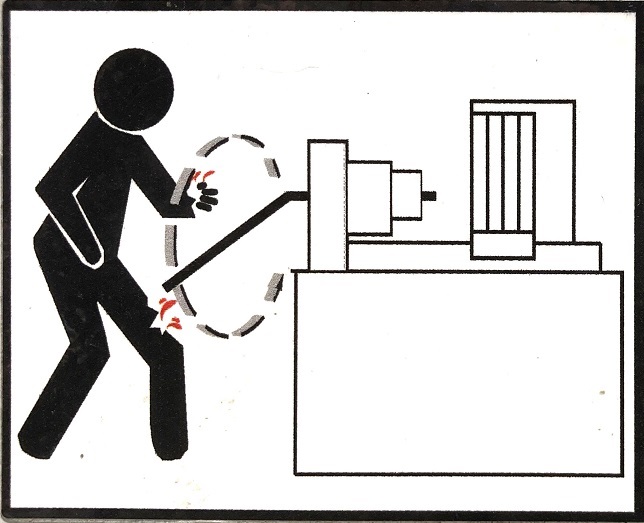
| |
|---|---|
- Support long thin stock that passes through the spindle. Rod stock can become bent and lash around, posing a potentially lethal hazard.
- If something sounds wrong to you, then it probably is. Stop, step back a minute and assess the situation. Ask someone if you are not sure.
- Ensure that the cutting tool is properly set and clamped in place before cutting
- Never start the spindle with the cutting tool in contact with the workpiece.
- Before starting the spindle, rotate it manually to ensure there will be no collisions.
Parts of a Lathe
Headstock
Traditionally located on the left side of the machine, the spindle is most usually belt-driven and speed controls are located on it.
The spindle is hollow to accommodate long workpieces. A variety of mounting fixtures are available: Collets, face plates, and chucks.
| Major parts on a lathe |
Bed
The smooth, precisely milled ways on the bed ensure that the motion of the carriage and tailstock are perfectly parallel to the axis of rotation of the spindle. The bed also carries a precision lead screw that can be used to drive the carriage for machining and thread cutting.
Carriage
An apron rides on the ways. It contains drive gears and a split nut that can be opened and closed over the lead screw to automate its motion. The apron can be also moved manually with a crank.
The cross-slide is carried on the apron and moves perpendicular to the spindle axis. It has a wheel for fine adjustments similar to the cross-feed on a milling machine.
The compound rest rides on the cross-slide. It can swivel and slide back and forth on top of the carriage and it holds the cutting tool.
A tool post mounts to the compound rest and clamps the cutting tool in place.
Tailstock
The tailstock supports the workpiece at the right end of the bed. A long workpiece would be supported by a "center," a pointed tool that keeps the workpiece fixed on its axis of rotation. The tailstock also permits drill bits to be chucked and fed into the spinning workpiece.
Pages in category "Lathes -- Metal"
The following 5 pages are in this category, out of 5 total.
